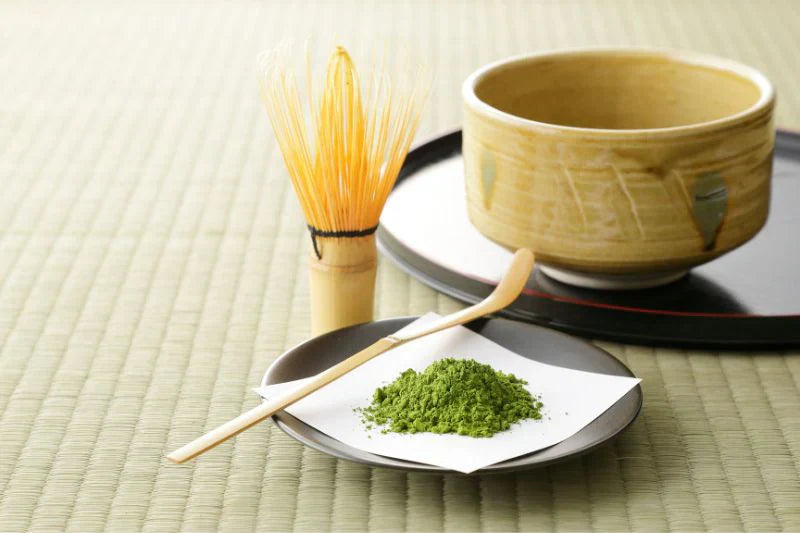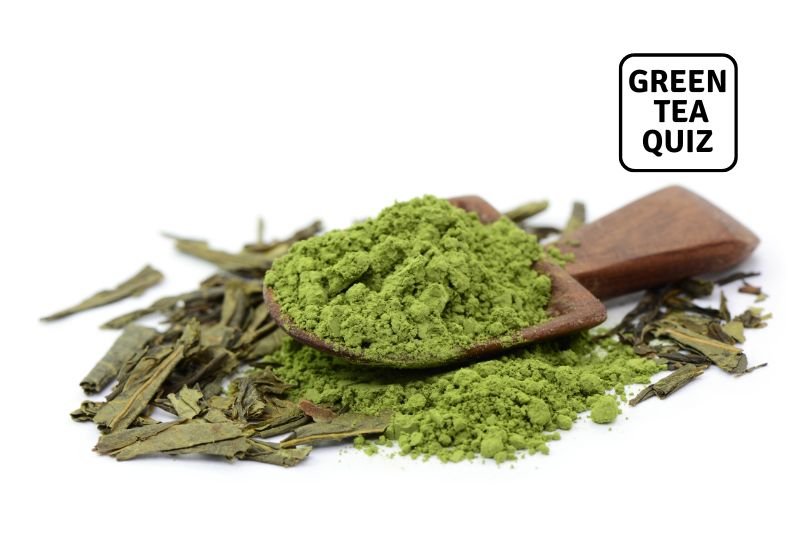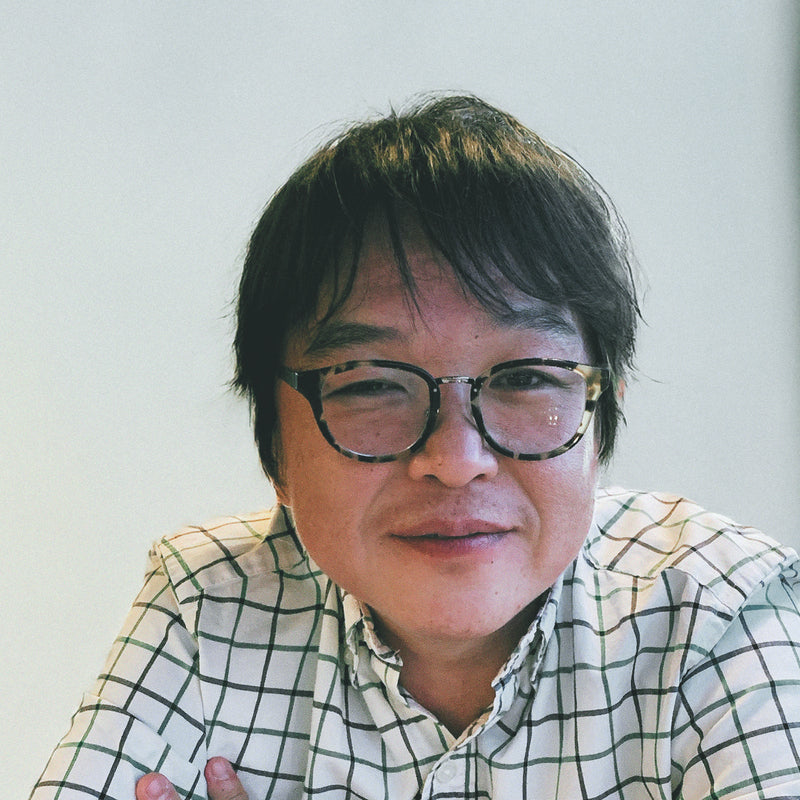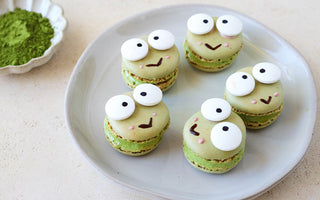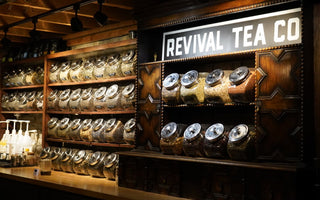With the clamor of knowing every "behind-the-scenes" detail of simply everything under the sun, from sumptuous food to shoemaking, have you ever wondered how matcha is made? While we have already talked about how Camellia Sinensis should be shaded before being harvested and the leaves should be deveined, removing the stems and the veins, to produce tencha, once you find out, you will realize how much patience, time, effort, and care are being put into every spoonful of matcha.
Since matcha is being used in so many different ways, from the traditional Japanese tea ceremony to flavoring and dyeing foods such as mochi and soba noodles, green tea ice cream, matcha lattes, and a variety of Japanese wagashi confectionery, it would be interesting to know the processing and grinding of tencha leaves into this fine, even green tea powder called matcha.
From Harvesting to Grinding
The very start of the creation of matcha is the shading of Camellia Sinensis to produce catechins and theanine that are beneficial to drinkers of matcha. Upon harvest, the leaves will be steamed and then cooled for oxidation, giving the matcha its aroma and umami flavor and maintaining the green color of the leaves.

This steaming process was invented by a tea merchant in Kyoto, Soen Nagatani, during the 18th century. Before the steaming method, the usual way was to roast the leaves over a heated pan, which came from the Chinese traditional method of processing tea leaves to stop the oxidation of the tea leaves. The roasting makes the leaves brownish at the end of the process, but the steaming method allows the leaves to retain their green color and oxidation. Nagatani also introduced a new kneading step into the green tea-making process called Sencha that has been used to make most of the Japanese green teas, including gyokuro and matcha.
Upon drying, the leaves will be sorted out and deveined to remove the stems to produce tencha leaves, the flat leaves that look like dried herbs. Tencha is never a final product. The tencha leaves will be dried again after sorting and crushed and ground thereafter. Tencha leaves are kept in a cool and dark environment to avoid degradation, and the manner of grinding tencha has a direct impact on the grade of the final product.
Tencha is the Soul of Every Matcha
The process of stone-grinding tencha leaves was introduced in Japan during the 12th century by a Zen Buddhist monk named Esai. The leaves were pulverized into a fine powder, added to a bowl along with hot water, and whisked into a frothy cup.
Tencha is the soul of matcha. It is the raw material to be ground to be transformed into a very fine green tea powder called matcha. This is grown and deveined specifically for grinding, as stems and veins would interrupt the grinding process, leading to an uneven powder. While nowadays there are machine grind mills using heat for faster grinding of tea leaves that cause the matcha powder to lose some of its natural aromas in the process, Ishi-usu is the traditional stone-mill grinding mechanism that is being used to grind the tencha. Ishi-usu is used to make premium-grade matcha.

Another grinding mill is usually made from granite that is known to be a "soft" stone, as one avoids too much friction or heat for burning or oxidation of the leaves. This is to be used by rotating the mill counterclockwise slowly and carefully to create a finely powdered tea. Each revolution is done at a three-second interval, or about thirty revolutions per minute, so as not to burn the leaves if too fast or to leave the uneven texture of the powder if too slow.
The process also takes a lot of patience and time since the ground powder should end up at least a mere micron (μm) size. Also, it takes about an hour to grind twenty-five to forty grams of matcha. Thus, it takes an expert to truly grind using an ishi-usu or granite grind mill a high-quality ceremonial and premium-grade matcha.
This is the process we use at Japanese Green Tea Co. for our matcha.
Other Methods for Grinding
But nowadays, there is a more modern way to grind tencha leaves to make matcha. Ceramic ball mills are used by matcha grinding factories, with ceramic balls inside that grind the matcha leaves while the external container rotates continuously. The mill is loaded with tencha leaves by a machine operator in the evenings and set to a specific program, to be ground at night and offloaded by workers the next morning. It is usually used in culinary-grade matcha production. However, while this method produces more matcha, the heat caused by the milling causes the leaves to turn a more pale color compared to the traditional way of milling.
Note: We do not use this approach at Japanese Green Tea Co.

The "bead mill method" is another way of grinding tencha leaves and uses small balls or beads to crush the leaf into powder, making the same fine powder but less clumpy. This makes the grinding process faster and produces larger amounts of matcha in less time than other tencha grinders, up to 20 kg per hour, at a lower cost. It allows continuous feeding and powder granularity control and prevents leaf color and flavor degradation with an integrated cooling system. When Matcha powder is made at a factory, the final powder product they get is only about one fifth or sixth of the original leaf weight.
Note: We do not use this approach at Japanese Green Tea Co.
The next time you take a sip of a cup of matcha, you will likely more appreciate its aroma, texture on the tongue, and taste, as well as the cost of ceremonial and premium-grade green tea powder. It is truly a work of art for authentic Japanese matcha to be able to deliver the leaves to your cup in powder form. Having said this, the way you see matcha on your next drink will definitely not be the same as some average beverage but a cup of drink with a heart and soul.
Get Free Bonus Books
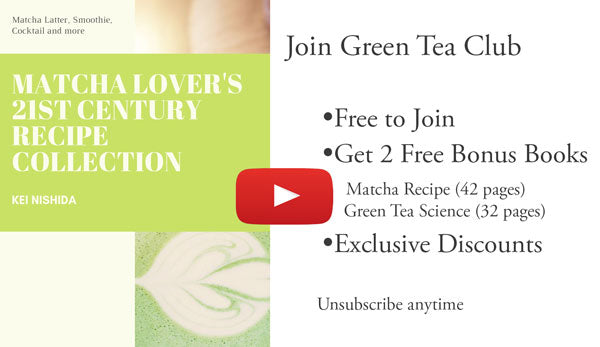
Sign up for free to the Green Tea Club to get advice and exclusive articles about how to choose Japanese Tea, and tips, tricks, and recipes for enjoying Japanese tea.
About the author
Kei Nishida
Author, CEO Dream of Japan
Certification: PMP, BS in Computer Science
Education: Western Washington University
Kei Nishida is a passionate Japanese green tea connoisseur, writer, and the founder and CEO of Japanese Green Tea Co., a Dream of Japan Company.
Driven by a deep desire to share the rich flavors of his homeland, he established the only company that sources premium tea grown in nutrient-rich sugarcane soil—earning multiple Global Tea Champion awards.
Expanding his mission of introducing Japan’s finest to the world, Kei pioneered the launch of the first-ever Sumiyaki charcoal-roasted coffee through Japanese Coffee Co. He also brought the artistry of traditional Japanese craftsmanship to the global market by making katana-style handmade knives—crafted by a renowned katana maker—available outside Japan for the first time through Japanese Knife Co.
Kei’s journey continues as he uncovers and shares Japan’s hidden treasures with the world.
Learn more about Kei

